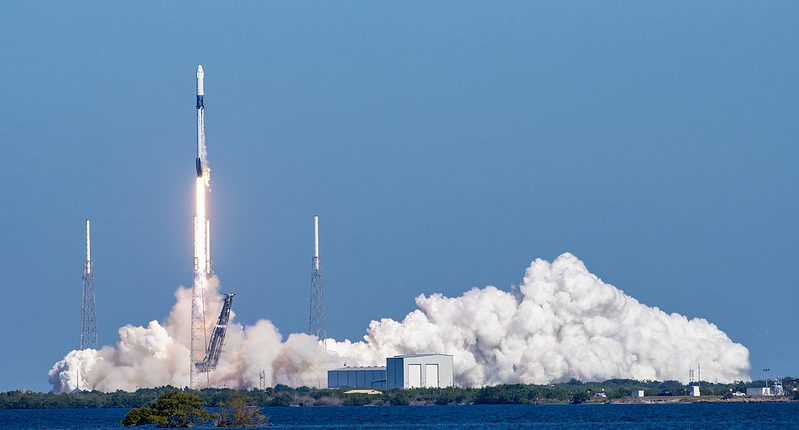In a show of consistency that SpaceX has finally come achieve, Elon Musk’s rocket company completed yet another successful launch of its Falcon 9 rocket. This was company’s 13th rocket this year, and its 11th Falcon 9 (the company also flew two Falcon Heavy missions in 2019).
The launch was scheduled for a Boeing satellite, that is purposed to provide communications services for customers Kacific and SKY Perfect JSAT. The launch was successful with the payload being placed precisely in the target orbit. But the satellite placement was just one part of the launch.
As has been the case with most SpaceX launches off late, a crucial part of the mission was yet again, the recovery of Falcon 9’s booster stage as well as both halves of the cone fairing that protects the spacecraft’s cargo and that is shed before the upper stage reaches its target orbit. While the booster was recovered safely yet again, SpaceX missed recovering the nose cone fairing this time.
The recovered booster was in itself being used for the third time. The same booster previously supported the CRS-17 mission in May 2019 and the CRS-18 mission in July 2019. Following stage separation, SpaceX landed Falcon 9’s first stage on the “Of Course I Still Love You” droneship, which was stationed in the Atlantic Ocean.
Recovery of crucial rocket components like the booster and fairings is important for SpaceX’s re-usable rocketry program. Musk has stressed time and again, that his vision of setting up colonies on Mars and humanity being a space faring species can only be achieved if we excel at re-using crucial, expensive rocket components.
The Tech Portal is published by Blue Box Media Private Limited. Our investors have no influence over our reporting. Read our full Ownership and Funding Disclosure →






